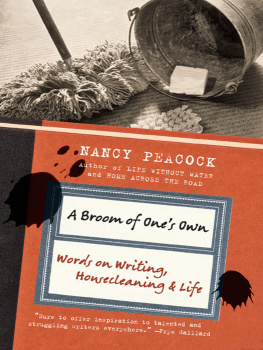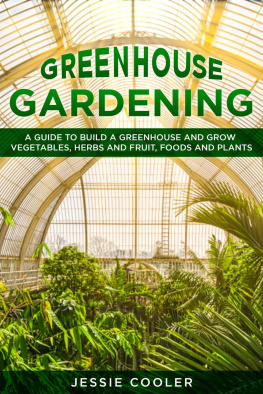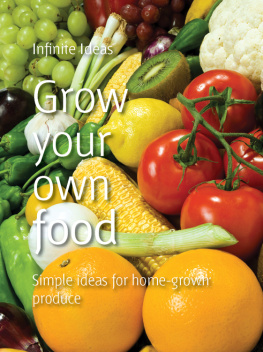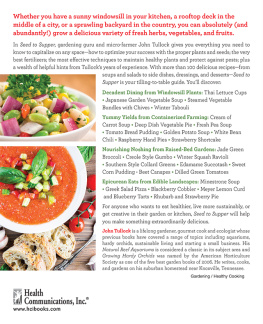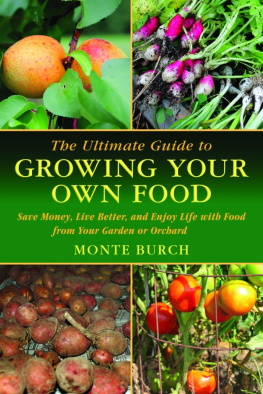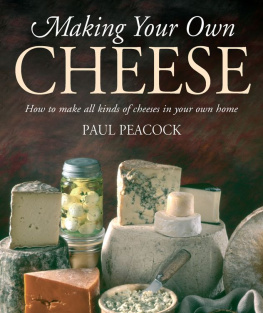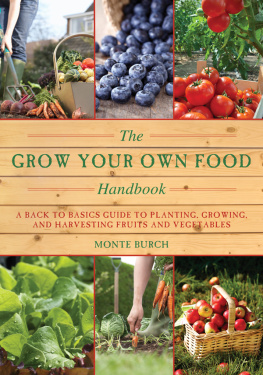At www.howto.co.uk you can engage in conversation with our authors all of whom have been there and done that in their specialist fields. You can get access to special offers and additional content but most importantly you will be able to engage with, and become a part of, a wide and growing community of people just like yourself.
At www.howto.co.uk youll be able to talk and share tips with people who have similar interests and are facing similar challenges in their lives. People who, just like you, have the desire to change their lives for the better be it through moving to a new country, starting a new business, growing their own vegetables, or writing a novel.
At www.howto.co.uk youll find the support and encouragement you need to help make your aspirations a reality.
For more information on growing vegetables on your patio and other small spaces, visit www.patio-produce.co.uk .
There is a huge interest in growing vegetables and food. A recent survey suggested that five million people wanted to live the good life and keep chickens, grow some of their own food and somehow achieve a level of self sufficiency.
But many of us believe the idea of getting anywhere near self sufficient can only be a distant dream because we live in the city. We have a balcony thrusting into the sky from a city centre flat, a back yard as we say in the north, on a terraced house of the tiniest patio area there is. This belief is erroneous. Patio Produce aims to show the reader in simple practical terms just how much is possible in the smallest space.
If you have access to sunlight, you can grow at least some of your own food, and in this world of globalisation, where our produce is flown in from the far corners of the earth, growing your own has some amazing consequences.
Firstly, you are helping to save the planet. Even in a small way the journey from your patio or balcony or the path to your door to your plate is metres and not hundreds of kilometres. That has to have an environmental payoff.
Secondly, you can grow without chemicals, and in this book we make the point that using chemicals on the patio might bring problems not thought of compared to wider use in the garden and on a farm. You can be completely sure the food you grow is healthy, fresh food.
The food you grow in pots, containers, bags and grow bags can be the best food ever. I remain convinced that potatoes taken from their compost, cooked and consumed within minutes of them being in the ground and growing, have a flavour no gourmet, no chef, no restaurant can beat.
More than any of these reasons for growing your own, regardless of what space you have, no way of life is healthier for anyone than to get compost under your fingernails and see green things growing. Dont sit frustrated at the space you have; dont give up before you even start. Get out there and grow something.
This book is meant to be handled, scribbled on, tried out, watered by accident and generally dirtied by grubby fingers. It is a book to be dipped into when you need information and read whole when you need a little inspiration. I have grown all of the plants and produce over the years in the tiniest of situations and I can say they really do work even in the north of England where I live.
Paul Peacock
This book is aimed at the majority of us who live in terraced houses, high rise flats, town houses and semi-detached properties with little more than a postage stamp for a garden and often nowhere to grow but the patio.
It seems the great buzz words of the last few years are Grow your Own. A real movement of people who grow their own food is building in popularity and I longed to be one of them. But with no land at all and even less free time, the whole idea of growing vegetables seemed dead in the water. I became increasingly frustrated watching TV gardeners with acres of space, room for tonnes of produce, chickens and pigs, tell me how easy it was to live off the land. Television programmes that exhorted me to get out there and Dig for Victory simply got on my nerves.
I tried an allotment but it had insurmountable problems for me. It was too far away for a start; by the time I got there it was time to come home. Secondly, there were too many regulations. There was always someone coming along with something negative to say (I have since found out that the politics of the allotment can sometimes be difficult to cope with). Finally, when I tried to find a friendlier allotment I found there were no plots available; nothing but waiting lists. So, finally I cut my losses and decided to concentrate on turning my little postage stamp of a patio into a productive food-producing machine.
WHY BOTHER GROWING ON A PATIO?
So, why should we bother growing our own vegetables on a patio when there isnt that much space there in the first place?
We have all been urged to look inside our shopping baskets to find out where our food comes from, what chemicals are in them, how many food miles they have travelled and what are the rights and wrongs of the stuff we eat. One thing that all the pundits seem to be agreed on is that sooner or later we will have to grow more of our own food at home. The economics of shipping tomatoes from Kenya and potatoes from Brazil will eventually give way to a more home grown, local system of growing and distributing food. But even if you care little for the politics of food, the very idea of having fresh produce at your back door must excite anyone who, like me, likes their grub. Once you have tasted potatoes plucked from your own garden, carried to your kitchen, cooked and eaten within minutes, you will no doubt have all the motivation needed for growing more and more food at home, even if there is only a postage stamps space to grow it in.
The common patio takes many shapes and is made from all sorts of material. For some, like those in a modern town house, it is simply a few paving slabs dropped by the French windows. For others it is a raised area of decking, and for some it is a balcony many metres in the air. The environment of the patio, the growing conditions and its ability to sustain plant life obviously depends on the geographical setting, but they all have some properties in common. There are many reasons why you should consider patio gardening techniques in your garden if it is less than around 10m2. In such a small garden there is not really enough space to set aside land for crops, and by growing in containers you will have a greater versatility, the ability to move crops around, and by harvest, probably a better yield.
THE BASICS OF GROWING IN POTS AND CONTAINERS
There is no end to the ways you can grow on a patio, and no end to the crops you can grow. Of course, the very word patio implies that you will actually be growing in pots and containers of all kinds. Containers should provide all the requirements for a plant to grow well, if only for a few days at a time and with the added bonus of being able to move them around to suit your needs. As a plant grows too large for a space you can move it elsewhere, or you can rotate your pots so that the plants might get their turn of good sunlight.
WATER, ROOTS AND SHOOTS
Roots, the parts of plants we normally dont see, need to be kept healthy. Healthy roots do not always make for healthy shoots, but the opposite is always the case. Containers need to be the correct size for the plant so that the roots can grow without being confined. The compost they grow in needs to provide water and oxygen as well as an ample supply of nutrients and support so the plant doesnt fall out of the pot in the breeze. Sometimes in growing on the patio it is necessary to help the roots by providing extra support.



